Arctotis angustifolia
Arctotis angustifolia L.
Family: Asteraceae
Common names: narrow-leaved arctotis (Eng.); smalblaar gousblom (Afr.)
Introduction
This silvery-leaved perennial will light up many a garden with its bright orange or white flowers in spring.
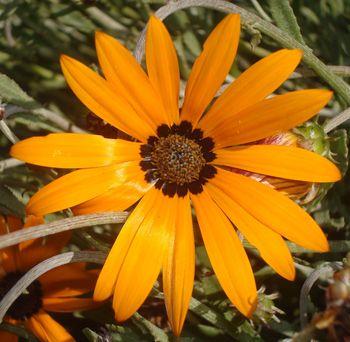
Description
Description
Sprawling perennial up to 0.4 × 0.6 m. The leaves are narrow, broadly obovate to oblanceolate, coarsely toothed, with margins slightly rolled under, and are usually darker above.
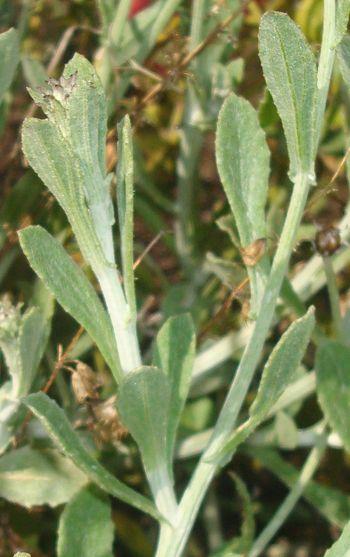
Solitary, radiate flowerheads, with orange, yellow or white ray florets, are borne on woolly peduncles. The disc florets are dark with the outer bracts obscurely tailed.

All fruits or achenes have 2 rounded cavities, a pappus of scales at the tip and basal hair tuft.
Flowering is in spring to early summer, from September to November.
Conservation Status
Status
According to the Red List of South African plants, the conservation status of this species is Critically Endangered (CR). It is known from only 2 severely fragmented populations and it is estimated that there are fewer than 250 mature wild individuals. It has lost its habitat to urban development, crop farming and invasive alien plants.

Distribution and habitat
Distribution description
Arctotis angustifolia occurs on sandy flats and slopes of the Western Cape, from Clanwilliam to Caledon, including the Cape Peninsula.
The habitat of this species includes a suite of Fynbos vegetation types, including Hangklip Sand Fynbos, Cape Flats Sand Fynbos, Atlantis Sand Fynbos, Overberg Dune Strandveld and Swartland Alluvium Fynbos. Despite this, habitat loss, alien invasive plants, urban development and expanding crop cultivation, remain constant threats.
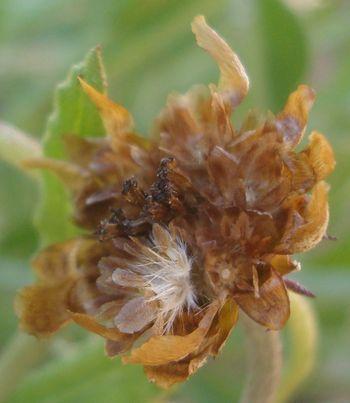
Derivation of name and historical aspects
History
The genus Arctotis was named by Linnaeus and means ‘bear’s ear’ from the Greek arctos, meaning ‘a bear’, and otis, ‘ear’, and refers to the scales on the pappus (fine hairs on the fruit) with its ear-like appearance. The specific ephithet angustifolius means ‘having narrow leaves’.
Arctotis consists of roughly 64 species in southern Africa and Angola. In South Africa species are found mainly in the Western and Eastern Cape, and Namaqualand-region and extend further east to other parts of the country. No species have been recorded in Swaziland.
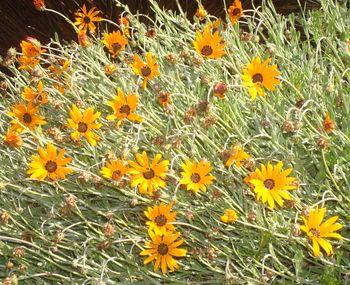
Ecology
Ecology
No interaction with any insects or birds has been observed.
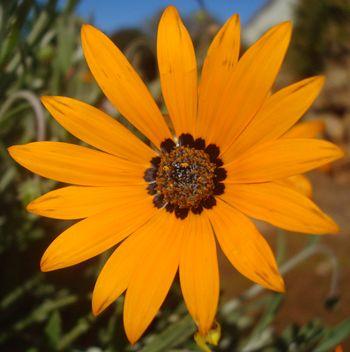
Uses
Use
Apart from being a horticultural ornamental, no other uses or cultural aspects have been recorded.

Growing Arctotis angustifolia
Grow
Arctotis angustifolia can be grown from seed and cuttings.
Harvest seed in early summer (from the beginning of November towards the end of December). Sow the seed in autumn (March to May) using a well-draining medium. Cover the seed with a thin layer of fine sand or compost. Water regularly, and ensure it never dries out or gets overwatered. Seedlings can be potted once the second set of leaves appears.
Make cuttings at any time of the year by taking material of between 6–10 cm. Cut below a node and remove the bottom two thirds of the foliage on the stem. Dip the node in a rooting hormone and place in a well-draining rooting media. Rooting will occur after between 14–21 days. Pot-on into a well-draining potting-mixture.
Companion plants to this species may include: Othonna dentata, Lampranthus aureus and L. amoenus, Pelargonium betulinum, P. cucullatum, P fulgidum, P. gibbosum and P. capitatum, Arctotis acaulis, Ursinia anthemoides, Dimorphotheca pluvialis, Coleonema album, Salvia lanceolata and S. africana-lutea, Agathosma serpyllacea and A. ciliaris, Erica sessiliflora, Cotyledon orbiculata, Aloiampelos commixta and Aloe succotrina.
This species has no known pests. Fertilizer applications are not a prerequisite, but will be an advantage.
Plant in a sunny position, in loose sandy soil or on a slope as this species enjoys its’ roots relatively dry.
For optimum garden appearance, it is highly recommended that this perennial be replaced after 2 to 3 years.
References
- Goldblatt, P & Manning, J. 1996. West Coast. South African Wild Flower Guide 7. Botanical Society of South Africa, Cape Town.
- Helme, N.A., Raimondo, D. & McKenzie, R.J. 2005. Arctotis angustifolia L. National Assessment: Red List of South African plants version 2017.1. Accessed on 2018/08/06.
- Manning, J. 2007. Field guide to Fynbos. Struik Publishers, Cape Town.
- Manning, J. & Goldblatt, P. 2012. Plants of the Greater Cape Floristic Region 1: the Core Cape Flora. Strelitzia 29. South African National Biodiversity Institute, Pretoria.
- Oliver, R. 2018-06. Arctotis aspera L. (Asteraceae). PlantZAfrica. Internet 5 pp. http://pza.sanbi.org/arctotis-aspera
- Stearn, W. 2002. Stearn's dictionary of plant names for gardeners. Timber Press, Portland, Oregon.
Credits
Roger Oliver
Kirstenbosch National Botanical Garden
August 2018
Plant Attributes:
Plant Type: Ground Cover, Perennial
SA Distribution: Western Cape
Soil type: Sandy
Flowering season: Spring, Early Summer
PH: Acid
Flower colour: White, Orange
Aspect: Full Sun
Gardening skill: Easy
Special Features:
Horticultural zones








Rate this article
Article well written and informative
Rate this plant
Is this an interesting plant?
Login to add your Comment
Back to topNot registered yet? Click here to register.